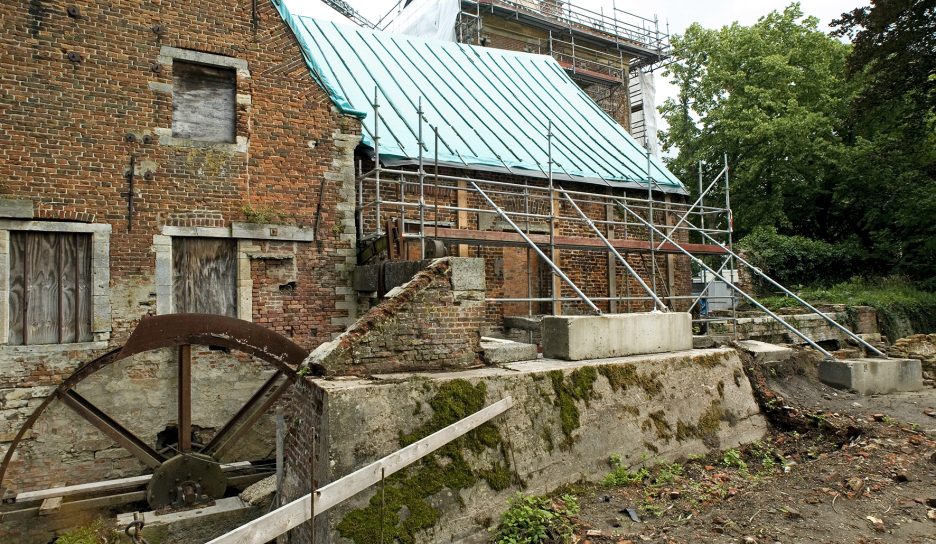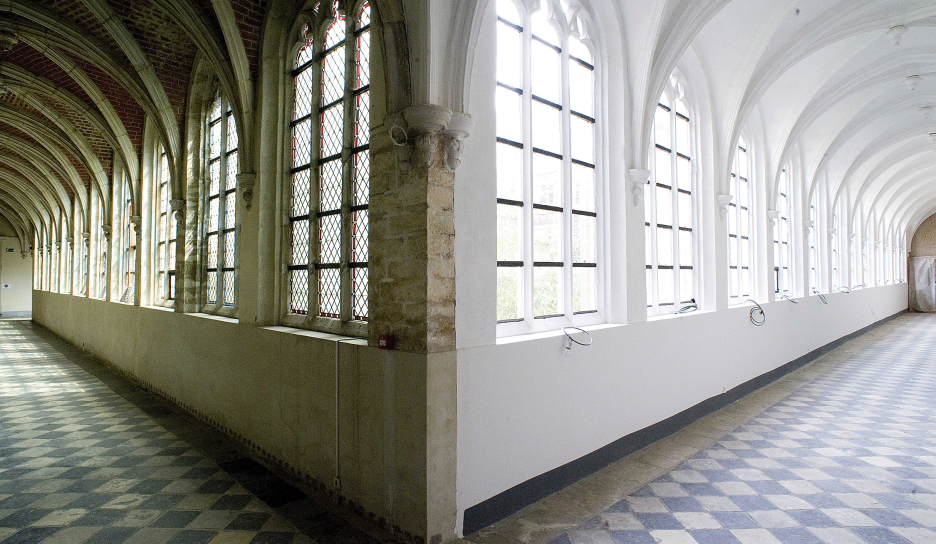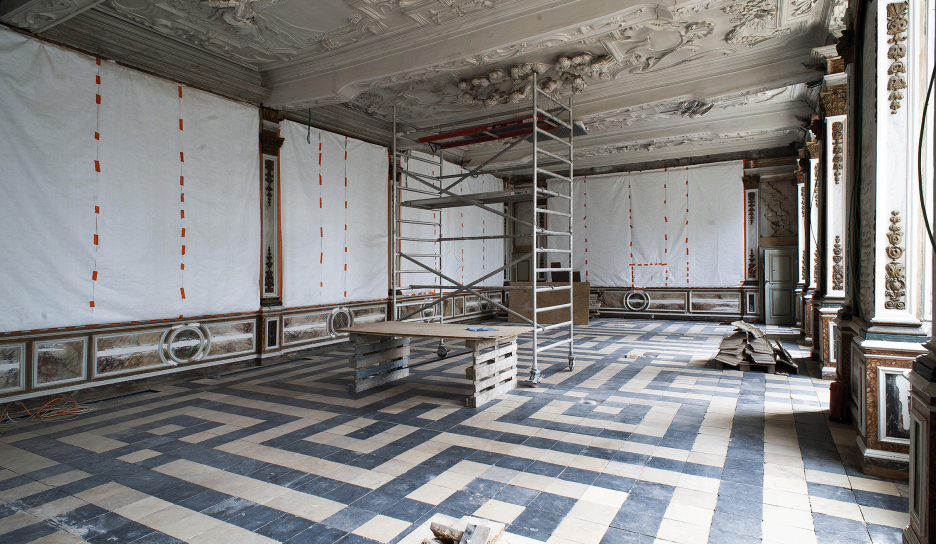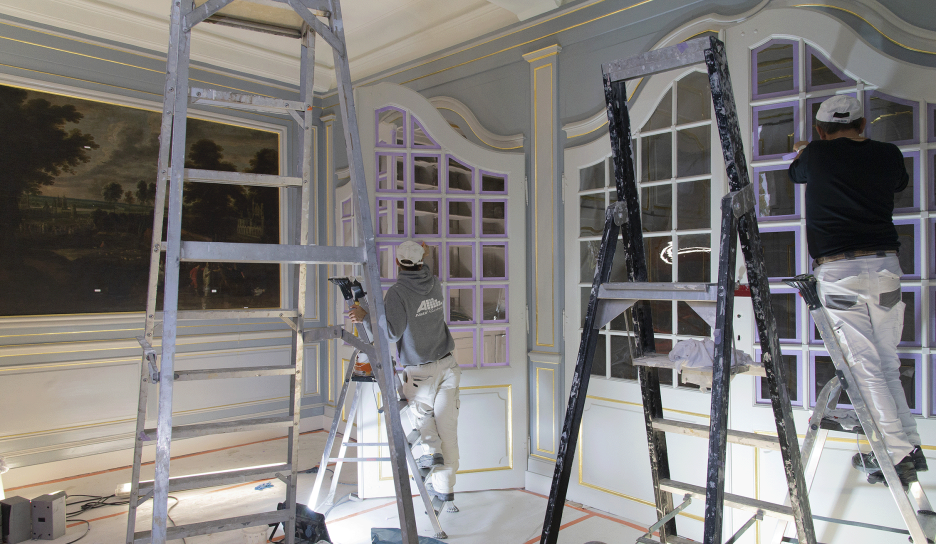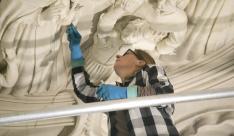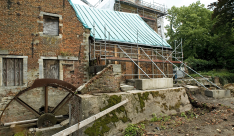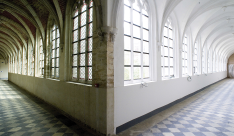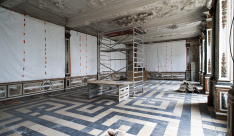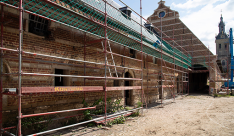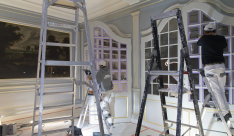Restauration
The centuries’ old abbey site kept its authenticity throughout the centuries. In the 21st century, the abbey site has undergone a thorough restoration, with the utmost respect for the past, in order to lay the foundations for a sustainable future.
Restauration
In the 21st century, the abbey site has undergone a thorough restoration, with the utmost respect for the past, in order to lay the foundations for a sustainable future.
In 2011, the city of Leuven started the extensive restoration campaign for all the buildings and landscapes in a large-scale collaborative project that received financial support from the Flemish government.
The teams opted for a soft restoration, combining respect for the past with a sense for innovation and renewal, in line with the heritage site’s motto: tradition in renewal, renewal in tradition. The 18th century blueprint served as the basis for the restoration.
Respect for history and unique authenticity can be seen, for example, in the choice of materials: appropriate limestone, oak wood, historical oil and lime paints and so on are used. You notice this in the overall approach, which includes a thorough architectural survey, new mouth-blown glass in the monastery aisles and a discreet (but necessary) integration of 21st century techniques. Boiler rooms and technical areas were fitted out, and the recovery of heat energy from the groundwater – already in place since 2017! – was optimised thanks to a partnership with the city of Leuven and the Watergroep. Potable water is an energy source within the abbey, and the valley of the abbey serves as an important water catchment area for Leuven and the Watergroep.
© Pol Leemans
Timeline
2017 - 2019
- Since 25 October 2017, the first parts of Park Abbey have once again been open to the public
- In the same year, the beautifully restored west wing PARCUM, museum for religion, art and culture, was opened
- Work was carried out in and around the abbey’s ponds in 2018
- Restoration work on the 2.2 kilometre-long walls was completed in 2018
- The city of Leuven took street art onboard, and the entrance to the abbey saw the inauguration of the Peace Carillon. Since 11 November 2018, its bells have sounded out each day from the tower of the St. John the Evangelist Church.
- The Guest Quarter has been housing the Braxatorium Parcensis microbrewery since 2019
- Across the way, Friends of Park Abbey got their own room
- The Library of Voices of the Alamire Foundation became operational in the Norbertuspoort. Here, musical manuscripts are made accessible to the public via digital media. This project won the public prize of the Onroerenderfgoedprijs.
2020 - 2021
- Since May 2021, the most important historical spaces of the abbey have once again been open to the public. The restoration of the south wing, salons and chambers of the abbot was completed just in time for the 900 year Norbertine celebration
- In the central farmstead, the abbey farm, with tithe barn, stables and milk house was put back into use after restoration
- With the vegetable and organic farmers from Boerencompagnie, the abbey farm now has ‘residents’ which fits nicely with its centuries-old function. Farm shop De Wikke and educational hands-on farm Boer&Buiten also got a place there
- Landwijzer will be teaching organic farmers in the new classrooms above the stables
2022
- The restoration of the east wing and the infirmary is in its final phase and is expected to be completed by 2026. The abbey is being made functional according to contemporary standards, while preserving its authentic character. It will be accessible to everyone, including people with limited mobility. The east wing will serve as living quarters for Norbertine canons and (priest) students from KU Leuven, while the ground floor and attic will be used for exhibitions or meetings. The architectural firms Robbrecht and Daem and Studio Roma are involved in the project, including the addition of two new towers to the historic claustrum.
- For the restoration of the stained-glass windows, the city of Leuven and the Flemish Government entered into a partnership agreement with the intention of reinstalling part of the stained-glass windows in the restored west and south wings in 2023. After the restoration of the east wing and infirmary, the collection can (hopefully) be fully displayed by 2026
Further to 2027
- In the longer term, the green service will oversee the redevelopment of the nature park by Norbertusweg. Where there used to be tennis courts and a football field, there will now be space for nature and gentle recreation
- By 2027, all the monastery buildings of Park Abbey will be fully restored



